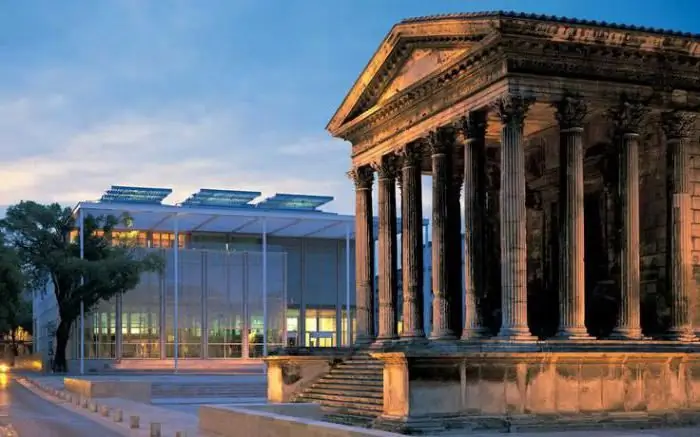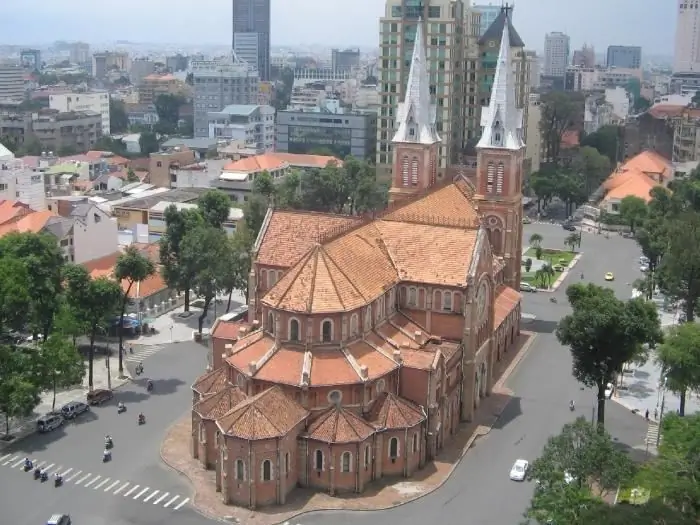- Author Harold Hamphrey [email protected].
- Public 2023-12-17 10:06.
- Last modified 2025-01-24 11:10.
Palmyra (Syria) is one of the oldest cities in the world. The first mention of this city dates back to 900 BC. Palmyra was ruled by the most famous kings of antiquity to this day. Revolts, collapse of empires, intrigues and many other significant historical processes took place there.

The architecture of ancient times has survived to this day and is truly unique. However, in 2015, the remains of the ancient city were destroyed by Islamic State terrorists.
Ancient times
The antiquity of the city can be estimated at least by the fact that the Bible contains a description of such a fortress as Palmyra. Syria at that time was not a single state. Various kings and tribes ruled over its territory. A well-known biblical character - King Solomon - decided to found Tadmor (the former name) as a fortress to protect against Aramean raids. The place was chosen at the crossroads of trade routes. But soon after the construction, the city was almost completely destroyed as a result of the campaign of Nuavuhodnosor. But very successfulthe location prompted the new owners to rebuild the settlement. Since then, rich merchants and nobles have constantly arrived here. In a short time, from a village in the desert, Palmyra turned into a kingdom.

Rumors of untold riches spread even across Europe. The Roman emperor himself learned that near the Euphrates valley there is an incredibly beautiful city of Palmyra. Syria at that time was partly controlled by the Parthians, who were at war with Rome. Therefore, the imperial troops decided to take the city, but these attempts did not lead to success. A few years later, the commander from the Antonin dynasty nevertheless took Tadmor. Since then, the city and its environs have become a Roman colony. But local rulers were given extended rights that were not available in other conquered lands.
The greatest power
The struggle for these territories was much wider than control over the province of Palmyra. Syria is a third of the desert, which is impossible to inhabit. Therefore, control over this area depended on the capture of several stronghold nodes. Whoever controlled the region between the sea and the Euphrates valley had influence over the entire desert. Since the city was very far from the central Roman lands, there were often uprisings against the capital. One way or another, Palmyra has always remained a relatively independent province, following the example of Greek city-states. The peak of power came during the reign of Queen Zenobia. Merchants from all over the Middle East traveled to Tamdor. Luxurious temples and palaces were erected. Therefore, Zenobia decided to completely get rid of Roman oppression. HoweverAurelian, the Roman emperor, reacted quickly enough and went with the army to distant frontiers. As a result, the Romans conquered Palmyra, and the queen was captured. Since then, the decline of one of the most beautiful cities of antiquity begins.
Sunset
After the overthrow of Zenobia, the city still remained under the scrutiny of the Roman emperors. Some of them tried to rebuild and restore the original appearance of Palmyra. However, their attempts were never successful. As a result, in the 8th century AD, there was an Arab raid, as a result of which Palmyra was again devastated.

After that, only a small settlement remained from the mighty province. However, most of the monuments have survived, having survived to this day and until 2015 were under the protection of UNESCO. Syria - Palmyra, whose triumphal arch is known to the whole world, especially - was a real Mecca for tourists. However, things have changed.
Palmyra: a city in Syria today
Since 2012, a bloody civil war has been going on in Syria. By 2016, it is still not over and more and more parties are taking part in it. In the spring of 2015, Palmyra became the scene of hostilities. Like thousands of years ago, this province is the nodal point for desert control. There is a strategically important route to Deir ez-Zor. It was under the control of the government troops of Bashar al-Assad. Back in winter, militants of the terrorist organization "Islamic State of Iraq and the Levant" infiltrated the province of Tamdor. For several months theytried to take the city, but failed.
Destruction
However, at the end of spring, when the main forces of government troops were busy in other directions, the militants launched a massive attack on Palmyra. After a week of fierce fighting, ISIS still managed to take the city and its environs. This was followed by a series of brutal massacres. The militants began to destroy the ancient monuments of architecture. In addition, the terrorists allowed the so-called "black archaeologists" to work in the city. They resell the finds they find on the black market for a lot of money. The same monuments that are not transportable are destroyed.

Satellite images confirm that at the moment almost all the buildings on the site where the city of Palmyra used to be have been wiped off the face of the earth. Syria is still in a state of armed conflict, so it is not known if this terrible war will leave any monuments for our descendants.






